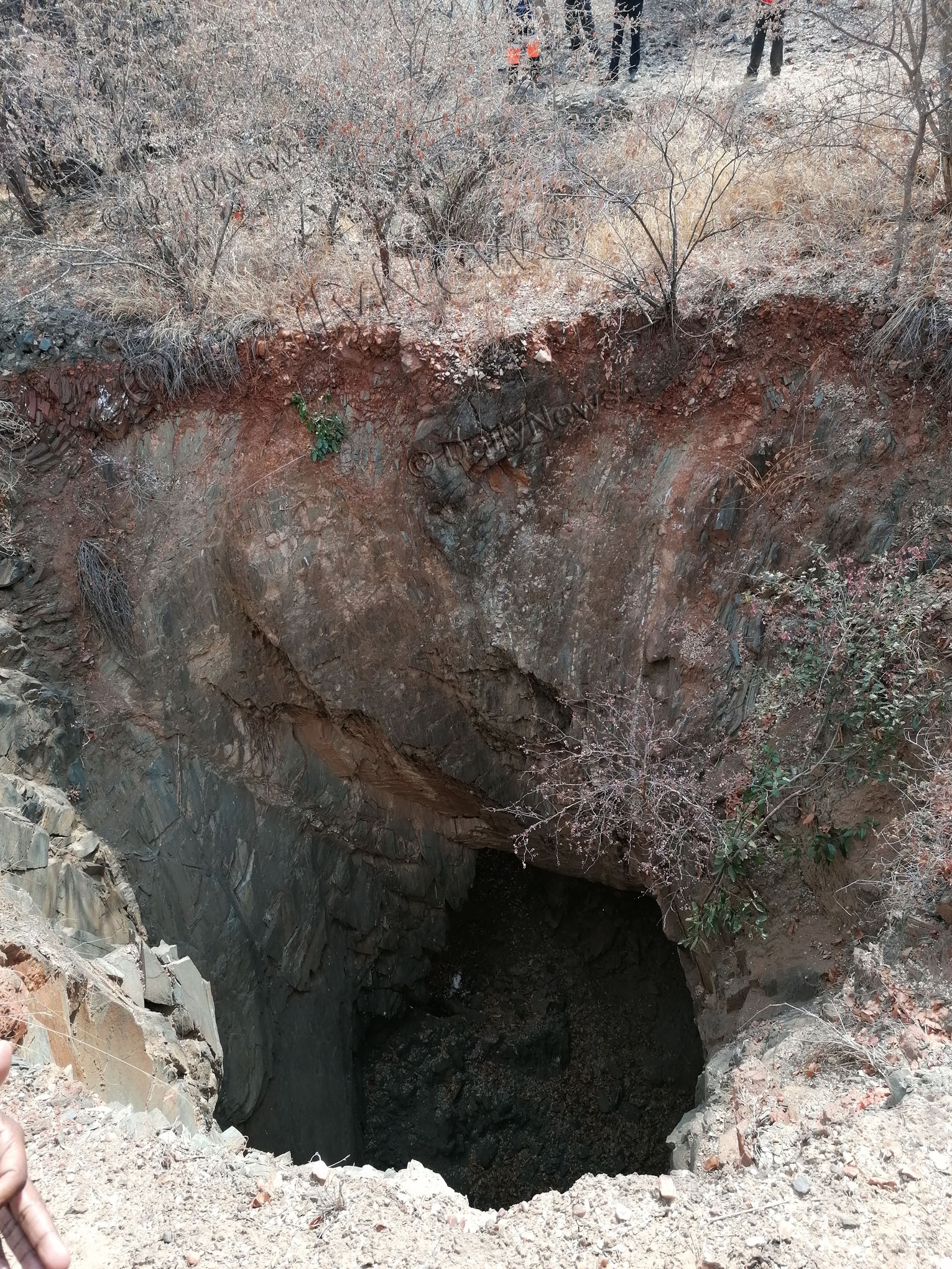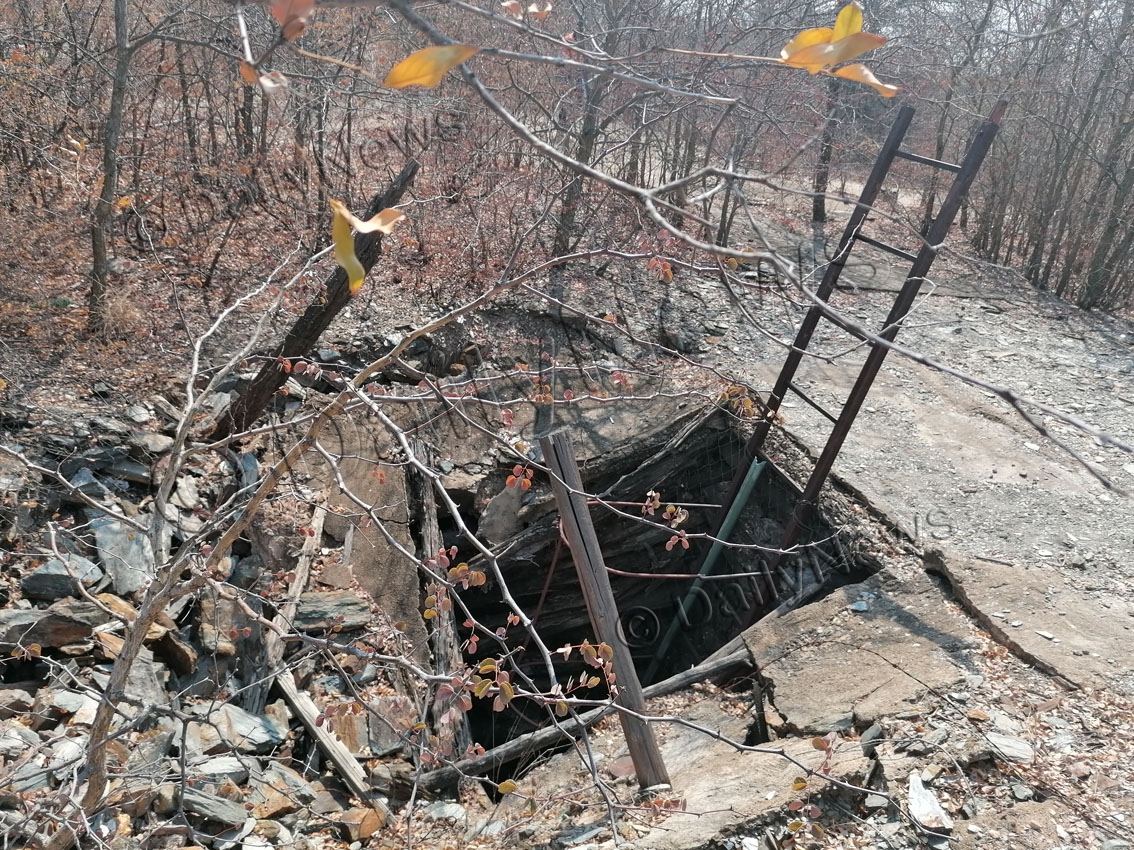Illegal gold mining can bleed economy
08 Aug 2019
In the desolate Patayamatebele forest, along the banks of the Tati River lies a treasure underground. Illegal artisanal miners or Zama Zamas (as they are affectionately known in South Africa and Zimbabwe) operate in abandoned gold mines.
These daredevil miners work for syndicates that feed the international intermediaries while they occupy the bottom of the food chain.
In Patayamatebele, they are driving a booming underground gold mining operation, which if left unchecked, could bleed the economy billions of dollars from abandoned mines in the Old Tati area.
Near the ancient open pit mines is evidence of rampant, indiscriminate and illegal gold mining activity in the area.
In one pit, on top of a hilly area, smoke is bellowing from the deep open pit and suspicions are that it is a result of explosives used to blast the stubborn gold bearing rock to ensure easy extraction of the earth to the surface for processing and refining.
Officer commanding, Diamond and Mineral Protection Unit, Senior Superintendent, Peloentle Morolong of the Botswana Police Service, recently told Patayamatebele and Matsiloje Old Mines Workings Rehabilitation Project stakeholders consultation meeting that they arrested some people with 98 bags of 12.5kg gold deposit residue and 26 bags of the same weight, respectively, trying to cross the border into neighbouring countries.
He noted that some had been prosecuted. Since they became aware of this illegal operation in 2016, they managed to confiscate 129 bags of gold residue in the Matsiloje and Patayamatebele area.
The law enforcement officer decried the fact that these foreigners were engaged in this illegal activity and were aided by Batswana who conducted surveillance on behalf of the criminal syndicates, tipping them off about law enforcement movements.
“This makes it difficult to break the criminal syndicates and cut off their supply chain”, he said.
The old gold mine pits, he noted, are everywhere in the area and pose a danger to people, wild and domestic animals which called for action to arrest the situation.
The illegal gold miners are exploiting the gold deposits and are able to evade arrest because of the help they get from locals, he said.
“Let us jealously guard our resources as Batswana and report this illegal activity. I urge you not to confront these people as they are dangerous, if you encounter them you need to withdraw and seek help from the authorities,” he cautioned.
Since they intercepted an ongoing activity, Snr. Supt. Peloentle noted that the country might have lost a lot of gold before this discovery.
Illegal gold mining is a multibillion-dollar transnational business enterprise and in South Africa, the Institute for Security Studies’ investigative researcher, Alan Martin noted in June, that it was estimated that the country was losing R14 billion a year to this illicit trade.
As a historically gold mining center in Botswana dating back to centuries ago, it is not surprising that this area has become a lucrative hunting ground for these illegal fortune seekers.
The area on the northern side of the Tati River is hilly and was once a thriving gold mining hub dating back to between 1100 and 1800 A. D., especially between 1250 and 1650.
Some of these mines date back 1 000 years ago, when rudimentary mining methods were the norm and villagers had been sitting next to this lucrative resource unaware of its economic potential.
Old Tati was the site of the first gold rush in Southern Africa and the mineral boom led to the growth of the town or commercial centre between 1868 and 1870.
The mining hub of Old Tati acquired significant status during this period going on to be the first white settlement north of the Limpopo.
Catrien van Waarden has mentioned that many miners did not have the money and machinery required and soon abandoned the mines to try their luck at the diamond fields in Kimberly. Therefore, by 1871, the settlement at Old Tati was virtually abandoned.
The mines were sold to the Tati Company and Old Tati was abandoned when Francistown was established further north along the river in 1897.
Since then, with the fall of the global gold prices and the 1929 Great Depression, the mines have changed hands until mining stopped completely in the 1950s.
However, the area has recently been transformed into a hive of activity with the influx of illegal foreign artisanal miners who are daring and defy death to enter into pits, some whose depth is unknown, to mine the resource.
The New Zealand mine, apparently, the deepest of all the mines in the Tati goldfields, was estimated to be about 360 metres while the Blue Jacket mine is thought to be the deepest pre-historic mine at 28 metres. While global demand for gold has cooled of beginning in the 21st century, in Patayamatebele and Matsiloje, global trends are defied.
Illegal gold miners are often unemployed and desperate individuals who risk their lives to venture deep into abandoned mine shafts and stay for days underground in unsafe conditions, with the hope of landing huge finds, which can transform their lives from rags to riches.
This form of mining has inherent dangers such as collapsing tunnels which can bury the criminals underground.
While this form of activity has been a common feature in neighboring countries, where they are often armed to deter authorities, evidence from the local police points to a growing trend which needs immediate attention.
The Zama Zamas have indeed arrived in the northeast district and these brazen fortune seekers have been giving authorities sleepless nights.
They risk death and arrest and are normally employed by syndicates who get a lion’s share of the profits while they get a paltry share for basic survival.
Residents of these villages differ on what should happen to the old gold mines. While most are in agreement that government should rehabilitate the area as the mines are dangerous, some are against the sealing of the pits as they claim that the mines should be re-opened to boost employment creation.
Mr Dallas Makumbela of Patayamatebele argued that without police officers in their village it would be difficult to stop the illegal miners while Mr Molomo Maano said that without any mobile network coverage in their village this would be an exercise in futility.
In Matsiloje, Mr Simon Lephalo struck a positive chord on how the abandoned mines could benefit the residents.
He noted that some of the old mine pits have abundant water and argued that residents should be allowed to utilise them to avert the dire water situation facing farmers.
Some residents in Matsiloje called for corporate social responsibility programmes from mining companies that have an impact on livelihoods.
For his part, Mr Sydney Ncube told government officials that they were too slow to act as incidents of illegal mining at Rainbow Mine were reported as far back as 2016.
Illegal mining in Patayamatebele and Matsiloje, two of the villages which form part of the gold belt in the north east district has come into sharp focus and attracted the attention of the authorities as a major social and environmental concern.
As Kgosi Dick Moring of Patayamatebele observed, this activity might have been taking place for many years without detection. In most instances, it is driven by limited law enforcement and porous borders.
Illegal gold mining is a dangerous and lucrative vocation depending on who you talk to.
For those who enter these abandoned mine shafts risking their lives, it is a source of livelihood, while for the authorities it is a criminal enterprise that needs to be stopped because it lacks statutory authorization.
As pointed out by the director of Mines, Ms Selina Mogojwa, illegal mining has both negative social and financial implications on the state as it leads to loss of revenues, taxes, employment opportunities and foreign exchange earnings.
She informed residents that they were consulting them on the process of mine rehabilitation which they wanted to undertake to stem the tide of illegal gold mining in their area. Consequently, she explained that they had identified 58 old abandoned mine pits which would be rehabilitated.
The director highlighted that unlike the current situation where mining companies are given regulations on how to mine, in the past, especially, people mined without due regard to the environment as they were no guidelines to follow.
“Currently, we give guidance on mining to prevent a situation where pits are left without rehabilitation. Illegal miners do not observe safety protocols which on its own is dangerous,” she said.
Countrywide, she noted that old mines were in a bad state in places such as Otse, Moshana and Francistown. It is even difficult to trace who owned them before, she said.
The rehabilitation process, Ms Mogojwa highlighted, was necessary to protect the environment in line with Vision 2036 and National Development Plan 11.
Some of the old pit mines, she added, were close to heritage sites, hence their collaboration with the tourism department and the Botswana Tourism Organisation.
For those mines that are 10m deep, the director noted that they would fill them with soil while those that are 30m deep would be capped with concrete so that they do not sterilize the available gold deposits.
In future, she explained that technology might be used to mine the gold deposits if found to be commercially viable.
The contractor for the rehabilitation of the mines, Ms Mogojwa mentioned, would start work in September and said that they wanted the contractor to work in conjunction with the community.
The authorities urged residents to spread word that the mines would soon be sealed to avoid any unfortunate incidents. Ends
Source : BOPA
Author : Puso Kedidimetse
Location : Patayamatebele
Event : Interview
Date : 08 Aug 2019







